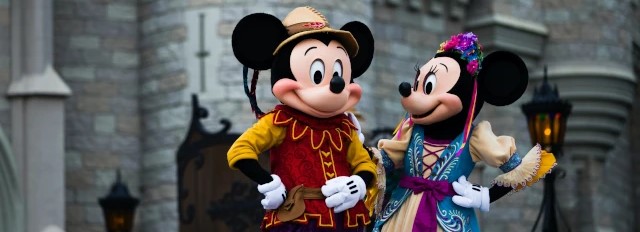In the grand tapestry of entertainment, few names sparkle as brightly or resonate as deeply as Disney. Beyond mere movies or theme parks, Disney stands as a paragon of storytelling, woven intricately into the fabric of our collective imagination. But behind this enchanting kingdom of wonder lies a masterful marketing strategy that has propelled Disney to unparalleled success, transcending generations and cultures.
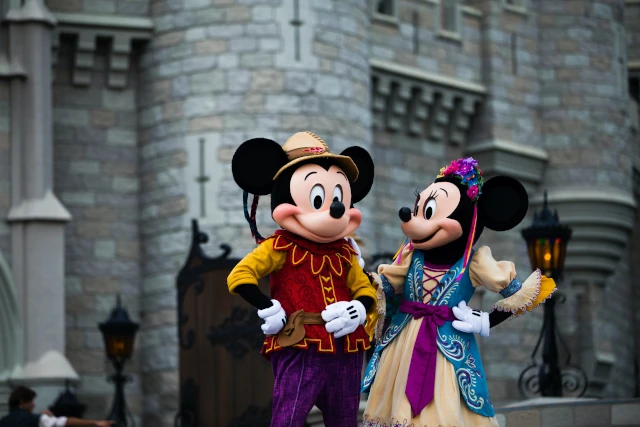
Founded by Walt Disney in 1923, this visionary embarked on a journey fueled by creativity and innovation, yet equally driven by a profound understanding of the power of effective marketing. From the earliest days of the iconic Mickey Mouse to the present-day blockbuster franchises, Disney’s success story is inseparable from its ingenious marketing endeavors.
At its core, Disney isn’t merely a brand; it’s an experience—an emotional pilgrimage for millions worldwide. The magic isn’t confined to the silver screen or the enchanted realms of theme parks; it’s in the artful orchestration of marketing that engenders a sense of belonging and emotional resonance among its audience. Each touchpoint, from the iconic castle logo to the theme park characters and merchandise, is meticulously crafted to evoke nostalgia, joy, and a sense of wonder.
What sets Disney apart is its unwavering commitment to storytelling, a cornerstone of its marketing philosophy. Every campaign, product launch, or theme park attraction is a narrative waiting to be embraced, allowing audiences to step into worlds where dreams flourish. This consistent narrative thread, woven seamlessly across various platforms, has cemented Disney’s status as not just an entertainment provider but a purveyor of dreams and aspirations.
As we embark on this exploration of Disney’s marketing prowess, we’ll unveil the layers of strategy that have propelled it to the zenith of the entertainment industry. From leveraging its timeless characters to embracing digital revolutions, Disney’s marketing journey is a testament to adaptability, innovation, and an unwavering commitment to storytelling magic.
Historical Perspective
Disney’s ascent to marketing excellence finds its roots in the visionary efforts of its founder, Walt Disney. In the embryonic stages of the company, Walt recognized the potency of effective marketing, intertwining it with his creative pursuits. The launch of Mickey Mouse in the late 1920s wasn’t just the birth of an animated character; it marked the inception of Disney’s marketing brilliance. Through strategic partnerships and innovative merchandising, Mickey Mouse swiftly became a cultural icon, laying the foundation for Disney’s marketing legacy.
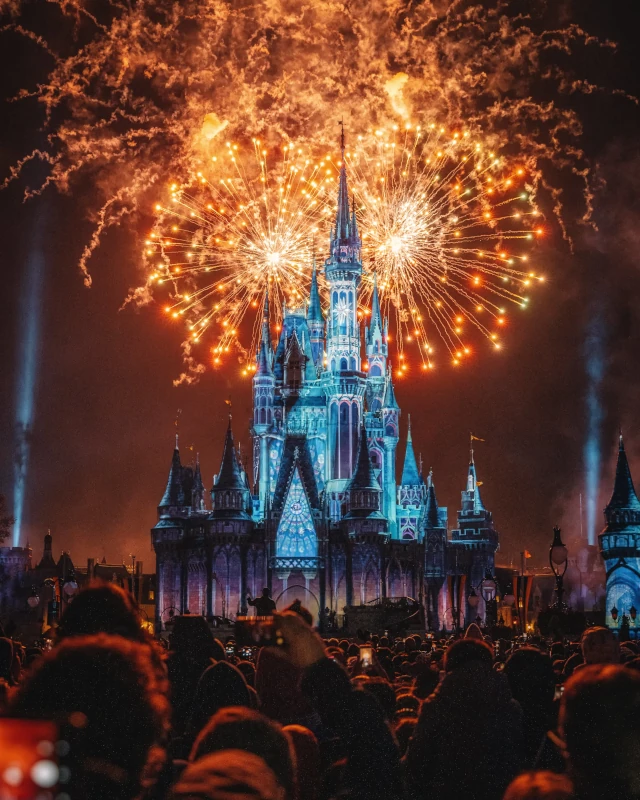
The advent of Disneyland in 1955 marked a groundbreaking shift in entertainment and marketing synergy. Walt Disney didn’t merely create a theme park; he orchestrated an immersive experience where marketing seamlessly blended with storytelling. The park itself became a living advertisement, captivating visitors with its magical allure while subtly promoting Disney’s brand ethos.
As the years unfolded, Disney continued to pioneer new avenues in marketing. From leveraging the power of television with shows like “The Wonderful World of Disney” to expanding into international markets, the company’s marketing strategies evolved in tandem with technological advancements and changing consumer landscapes.
One of Disney’s landmark moments was the acquisition of Pixar in 2006, a move that not only enriched its creative portfolio but also revolutionized its marketing approach. The synergy between the two powerhouses amplified Disney’s ability to tell compelling stories while expanding its reach across demographics and platforms.
Throughout its history, Disney’s marketing strategies have transcended mere promotional tactics; they’ve embodied a narrative—a tale of innovation, perseverance, and the unwavering belief in the magic of imagination. The company’s ability to adapt to changing times while staying true to its core values has been a hallmark of its marketing success, paving the way for an enduring legacy that continues to enchant audiences worldwide.
Branding Magic: The Disney Experience
Disney’s unparalleled success in marketing isn’t just about selling movies, merchandise, or theme park tickets; it’s about creating an emotional connection—an experience that transcends entertainment. At the heart of Disney’s marketing prowess lies its exceptional ability to craft and maintain a powerful brand image.
Central to this branding magic is Disney’s mastery in storytelling. Every movie, every character, and every theme park attraction is a chapter in an intricate narrative tapestry. This storytelling isn’t just confined to the screen or the parks; it’s interwoven into every aspect of the brand. From the logo of Cinderella’s castle to the whimsical characters adorning merchandise, Disney’s brand identity serves as a portal to a world of dreams and imagination.
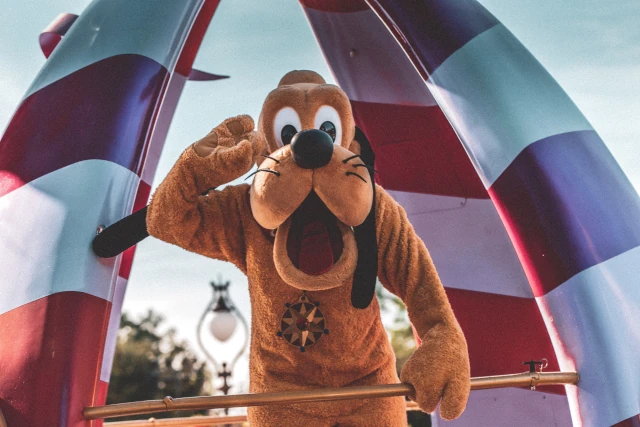
The emotional resonance Disney elicits in its audience is a result of consistent and immersive experiences. Whether it’s the heartwarming tales of friendship and bravery in its animated movies or the enchanting escapades within its theme parks, Disney crafts experiences that stay etched in memories. This emotional bond transcends generations, creating a loyal fan base that feels an integral part of the Disney universe.
Another element of Disney’s branding magic is its unwavering commitment to quality and excellence. The brand exudes a sense of trust and reliability, assuring consumers of an unparalleled experience. Whether it’s the attention to detail in its theme park designs or the high production values in its movies, Disney consistently delivers on its promise of magic.
The brand is synonymous with innovation and adaptation. It’s not confined to the past; it evolves with the times, embracing new technologies and cultural shifts. The recent foray into streaming services with Disney+ showcases this adaptability, leveraging digital platforms to further extend its brand reach and engage audiences in new ways.
Disney’s branding magic isn’t just about creating a marketable image; it’s about fostering a sense of wonder and belonging—a testament to the enduring power of storytelling and the artistry of imagination.
Multi-Channel Marketing Approach
Disney’s marketing brilliance extends beyond traditional boundaries, embracing a multi-channel approach that permeates various facets of consumer engagement. From movies to theme parks, merchandise, digital platforms, and more, Disney orchestrates a symphony of marketing channels to reach diverse audiences worldwide.
Disney’s multi-channel strategy benefits from seamless integration across different mediums. The synergy between its movies, theme parks, and merchandise creates a cohesive narrative, each channel complementing the other. For instance, a successful movie launch often triggers a surge in merchandise sales, while the themes and characters from these movies find life within the enchanting realms of Disney’s theme parks.
Disney’s adeptness in leveraging diverse platforms ensures maximum reach and engagement. Its presence in traditional media like television and print, coupled with a strong digital footprint, allows Disney to connect with audiences of varying demographics. The use of targeted advertising and personalized content further enhances the effectiveness of its multi-channel approach, tailoring messages to resonate with specific audience segments.
The company’s theme parks serve as experiential marketing hubs, offering visitors a tangible immersion into the Disney universe. These parks act as living advertisements, showcasing the brand’s essence through interactive experiences, rides, and character interactions. Additionally, Disney’s merchandise serves as portable extensions of its brand, allowing consumers to carry a piece of the magic into their everyday lives.
Disney’s acquisition of 21st Century Fox further expanded its content portfolio, amplifying its multi-channel marketing approach. This acquisition not only bolstered Disney’s movie and television offerings but also widened its reach across various demographics and genres.
This multi-channel marketing approach isn’t just about spreading its brand across different platforms; it’s about creating a cohesive and enchanting experience that resonates with audiences, transcending mere consumerism to create lasting emotional connections.
Leveraging Intellectual Properties (IPs)
At the heart of Disney’s marketing juggernaut is its treasure trove of intellectual properties (IPs)—beloved characters and franchises that have become cultural touchstones. These IPs, ranging from Mickey Mouse to Marvel superheroes and Star Wars, serve as pillars supporting Disney’s marketing strategies.
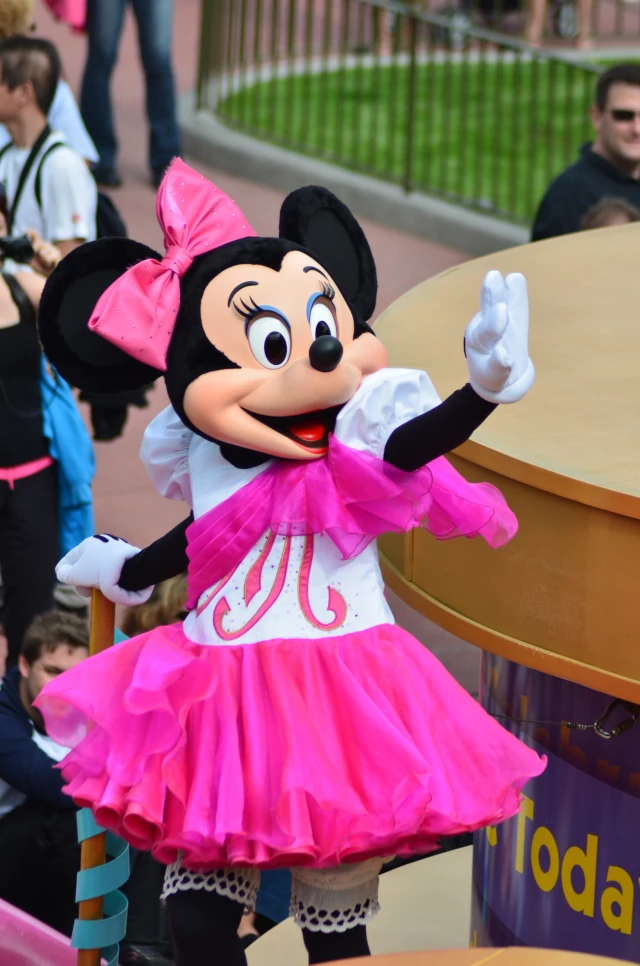
Disney’s smart marketing approach involves leveraging these IPs across multiple platforms. The cross-pollination of characters and stories from movies to merchandise, theme parks, and digital media creates a cohesive ecosystem that amplifies the brand’s presence. For instance, a successful movie launch isn’t just about box office numbers; it’s the catalyst for a myriad of marketing opportunities, from merchandise tie-ins to theme park attractions, creating a synergistic cycle of engagement.
The artful integration of IPs doesn’t stop at mere promotional campaigns. Disney masterfully crafts narratives that intertwine these characters and worlds, fostering a sense of interconnectedness that captivates audiences. This interconnected storytelling not only enriches the audience experience but also drives engagement and anticipation for future releases.
Disney’s ability to revive and reimagine classic IPs for modern audiences showcases its prowess in adapting to evolving consumer tastes. The live-action adaptations of animated classics or the expansion of universes through spin-offs and prequels exemplify Disney’s strategy of breathing new life into existing IPs while staying true to their essence.
The acquisition of franchises like Marvel and Lucasfilm expanded Disney’s arsenal of IPs, allowing the company to cater to a broader audience base. This strategic move not only fortified Disney’s position as an entertainment giant but also provided an extensive library of IPs to explore and monetize across various platforms.
Disney’s astute utilization of its intellectual properties isn’t merely about capitalizing on recognizable characters; it’s about weaving intricate narratives and experiences that resonate with audiences, fostering an enduring connection that transcends generations and cultural boundaries.
Innovation in Digital Marketing
Disney’s marketing mirrors the digital revolution, showcasing a profound commitment to innovation in the realm of digital marketing. Embracing the shift towards digital platforms, Disney has adeptly utilized technology to engage and captivate audiences in new and immersive ways.
Key to Disney’s digital marketing strategy is its adeptness in leveraging social media channels. Platforms like Facebook, Instagram, Twitter, and YouTube serve as dynamic canvases for Disney to connect with its global audience. Engaging content, behind-the-scenes glimpses, interactive campaigns, and user-generated content initiatives foster a sense of community while amplifying brand visibility.
Disney’s strategic use of influencers and content creators has proven instrumental in expanding its digital footprint. Collaborations with popular personalities or partnerships with influential channels allow Disney to reach wider demographics, tapping into the followers and engagement of these online influencers.
The launch of Disney+ marked a pivotal moment in Disney’s digital journey. This streaming service not only offered a vast library of content but also served as a hub for exclusive original productions, further solidifying Disney’s presence in the digital realm. The platform’s success lies not only in its content but also in its personalized user experience, leveraging data-driven insights to cater to individual preferences.
Disney’s embrace of immersive technologies, such as augmented reality (AR) and virtual reality (VR), has also redefined consumer interactions. AR-powered experiences in theme parks or VR content extensions for movies provide audiences with immersive and interactive encounters, blurring the lines between physical and digital realms.
A data-driven approach to digital marketing allows for targeted advertising and personalized content recommendations. Analyzing consumer behavior and preferences enables Disney to tailor its marketing efforts, ensuring a more relevant and engaging experience for its audience.
Innovation in digital marketing isn’t just about embracing new technologies; it’s about creating captivating and personalized experiences that resonate with audiences in the ever-evolving digital landscape.
Engaging with Consumers
Disney’s marketing brilliance extends beyond promotional endeavors; it’s deeply rooted in fostering meaningful engagements with its consumers. At the heart of Disney’s success lies its ability to cultivate a sense of community and connection, turning consumers into loyal fans and advocates.
A key part of Disney’s consumer engagement strategy is its emphasis on creating immersive experiences. Whether it’s through theme park attractions, live events, or interactive digital content, Disney endeavors to transport consumers into enchanting worlds where their favorite stories come to life. This experiential marketing approach doesn’t just entertain; it fosters emotional connections that resonate long after the experience ends.
Disney’s commitment to fan engagement goes beyond transactions; it’s about building relationships. The company actively listens to its audience, valuing their feedback and integrating it into its strategies. This open dialogue not only enhances consumer satisfaction but also reinforces a sense of being heard and valued, strengthening brand loyalty.
Engagement strategies also encompass a wide spectrum of touchpoints. From hosting fan conventions like D23 Expo to creating online communities and forums, the brand provides platforms for fans to connect, share experiences, and celebrate their mutual love for Disney. Additionally, special events, meet-and-greets with characters, and exclusive content further deepen consumer engagement by offering unique and personalized interactions.
The company’s commitment to personalization also plays a pivotal role in consumer engagement. Tailoring experiences and content based on consumer preferences, behaviors, and demographics helps Disney create more relevant and resonant connections with its audience. Whether it’s through targeted marketing campaigns or customized merchandise, Disney aims to make every interaction feel special and individualized.
Disney’s approach to consumer engagement isn’t merely transactional; it’s about creating emotional bonds and fostering a sense of belonging within a larger community of enthusiasts. By prioritizing immersive experiences, genuine relationships, and personalization, Disney transforms consumers into lifelong fans who become an integral part of the magical world it creates.
Partnerships and Collaborations
Disney’s marketing prowess isn’t solely self-contained; it thrives on strategic partnerships and collaborations that amplify its brand reach and influence. The company has forged alliances with diverse brands and entities, leveraging these collaborations as catalysts for innovative marketing campaigns and mutually beneficial ventures.
One of its notable partnership strategies involves co-branding and co-marketing initiatives. Collaborations with renowned companies such as Coca-Cola, McDonald’s, and LEGO have resulted in exclusive merchandise, promotional tie-ins, and cross-promotional campaigns. These partnerships extend the Disney magic beyond its own channels, reaching broader audiences through the established networks of its collaborators.
Disney’s synergistic collaborations extend to entertainment and media conglomerates. The acquisition of Pixar, Marvel, Lucasfilm, and 21st Century Fox expanded Disney’s portfolio of IPs, allowing for cross-franchise storytelling and strategic crossovers. This not only diversified Disney’s content offerings but also facilitated cross-promotion and merchandising opportunities across a vast array of beloved franchises.
Strategic alliances with technology giants like Apple, Google, and Amazon have also played a pivotal role in Disney’s marketing landscape. Collaborations for content distribution, digital platforms, and technological innovation have empowered Disney to harness the latest advancements, ensuring its presence across various digital ecosystems.
The brand’s partnerships transcend corporate collaborations; they extend to philanthropic and social initiatives. Collaborations with organizations like UNICEF, Make-A-Wish Foundation, and various environmental conservation groups reflect Disney’s commitment to social responsibility. These partnerships not only contribute to worthy causes but also enhance Disney’s brand reputation by aligning with values important to its audience.
Disney’s strategic partnerships and collaborations aren’t merely about expanding its reach; they’re about leveraging synergies, innovation, and shared values to create impactful campaigns, broaden its audience base, and cement its position as a global entertainment powerhouse. Through these collaborations, Disney continues to weave a tapestry of enchantment that resonates across industries and communities.
Measuring Success: Key Metrics
Disney employs a multifaceted approach to measure the success and efficacy of its campaigns, utilizing a diverse set of key performance indicators (KPIs) that reflect the brand’s impact and resonance with its audience.
One fundamental metric Disney utilizes is audience engagement. This metric encompasses various facets, including social media interactions, website traffic, and content engagement rates. Tracking likes, shares, comments, click-through rates, and time spent on content provides valuable insights into the level of audience involvement and the effectiveness of Disney’s storytelling.
It closely monitors brand sentiment and perception. Through sentiment analysis tools and consumer feedback, the company gauges how audiences perceive its brand, characters, and content. Positive sentiment and favorable brand perception are crucial indicators of successful marketing efforts and consumer loyalty.
Another pivotal KPI for Disney is revenue generation across its diverse business segments. Monitoring box office numbers for movies, merchandise sales, theme park attendance, and streaming subscriptions provides a comprehensive view of the financial impact of its marketing initiatives. These revenue metrics validate the effectiveness of marketing strategies in driving consumer spending and engagement.
Disney prioritizes audience demographics and segmentation analysis. Understanding the breakdown of its audience by age, gender, geographic location, and preferences aids in tailoring marketing strategies and content to specific consumer segments. This targeted approach ensures that Disney’s messaging resonates with diverse demographics and maximizes audience reach.
The company pays close attention to customer acquisition and retention metrics. Tracking new customer acquisition rates and analyzing customer churn or retention rates provides insights into the effectiveness of marketing campaigns in both attracting new consumers and retaining existing ones.
Disney’s measurement of marketing success goes beyond traditional metrics; it encompasses a holistic evaluation of audience engagement, brand perception, revenue generation, audience demographics, and customer retention. By analyzing these key metrics, Disney continually refines its marketing strategies, ensuring they align with audience expectations and contribute to the sustained growth and success of the brand.
Lessons from Disney’s Marketing Strategy
Disney’s marketing strategy offers several valuable lessons that other businesses across industries can learn from:
- The Power of Storytelling: Disney’s mastery of storytelling transcends its movies and extends to its marketing. Creating narratives that resonate emotionally with audiences helps build lasting connections. Other businesses can learn to infuse storytelling into their brand messaging to engage customers on a deeper level.
- Consistency Across Platforms: Disney maintains a consistent brand image across movies, theme parks, merchandise, and digital platforms. This coherence reinforces brand recognition and fosters trust. Consistency in messaging and branding is vital for businesses to establish a strong and recognizable identity.
- Leveraging Intellectual Properties: Disney effectively monetizes its intellectual properties by integrating them across various channels. Other companies can learn to maximize the potential of their own IPs, capitalizing on characters, brands, or content to create synergistic marketing campaigns.
- Engaging with the Audience: Disney prioritizes building relationships with its audience, actively listening to feedback and fostering a sense of community. Businesses can benefit by engaging with their customers, seeking feedback, and creating personalized experiences that resonate with their audience’s preferences and values.
- Innovation in Digital Marketing: Disney adapts to technological advancements, using digital platforms, social media, and immersive technologies to engage consumers. Embracing innovation in digital marketing allows businesses to stay relevant and reach wider audiences in today’s digital landscape.
- Strategic Partnerships and Collaborations: Disney’s successful partnerships broaden its reach and enable cross-promotion. Collaborating with other brands or entities can help businesses tap into new markets, leverage complementary strengths, and create impactful marketing initiatives.
- Measuring Success with Diverse Metrics: Disney doesn’t rely solely on traditional metrics; it uses a diverse set of KPIs to measure success, including audience engagement, sentiment analysis, revenue generation, demographics, and customer retention. Other businesses can learn to adopt a holistic approach to evaluate the effectiveness of their marketing strategies.
By embracing storytelling, consistency, engagement, innovation, strategic collaborations, and comprehensive metrics, businesses can draw inspiration from Disney’s marketing strategy to create compelling, resonant, and successful marketing campaigns.

